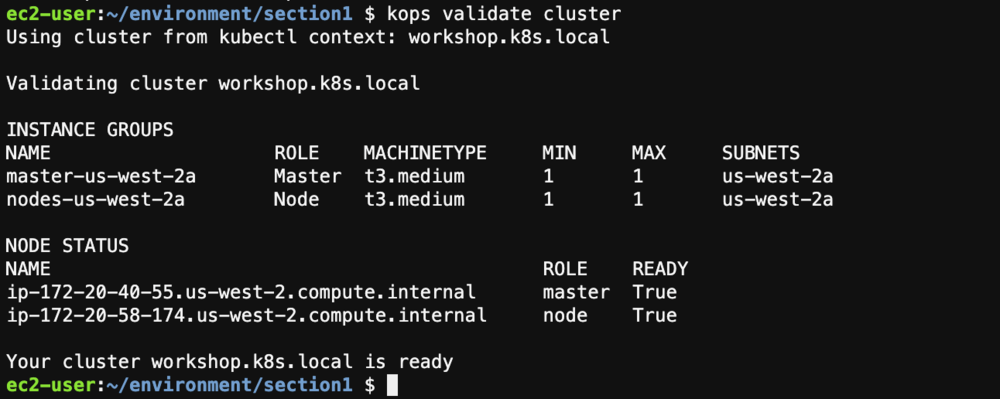2.1.1 - Verify the cluster is running
Hopefully by now the Kubernetes cluster has had enough time to start. Now we need to quickly test that everything is up and running.
- In the terminal, change to the section2 directory:
cd ~/environment/section2. Run
kops validate cluster. You should see something like this.
Run
kubectl get pods -n kube-systemand hopefully you will see something like this:NAME READY STATUS RESTARTS AGE coredns-558bd4d5db-bpsnz 1/1 Running 0 48m coredns-558bd4d5db-nrj6v 1/1 Running 0 48m etcd-ip-172-31-60-234 1/1 Running 0 49m heapster-86b8856788-f9ww5 1/1 Running 0 48m kube-apiserver-ip-172-31-60-234 1/1 Running 0 49m kube-controller-manager-ip-172-31-60-234 1/1 Running 0 49m kube-proxy-rk5qw 1/1 Running 0 48m kube-scheduler-ip-172-31-60-234 1/1 Running 0 49m kubernetes-dashboard-65ff5d4cc8-7cnj4 1/1 Running 0 47m local-volume-provisioner-2dl9q 1/1 Running 0 48m monitoring-grafana-ff99567f4-klcwx 1/1 Running 0 48m monitoring-influxdb-5cf7f5bf76-mqxpf 1/1 Running 0 48m nginx-ingress-controller-7d7545b56d-wmln8 1/1 Running 0 48m weave-net-rgrwj 2/2 Running 0 48m
What you are looking for is a list of pods that have a status. Running is best, but any status shows us that the Kubernetes cluster is at least running.